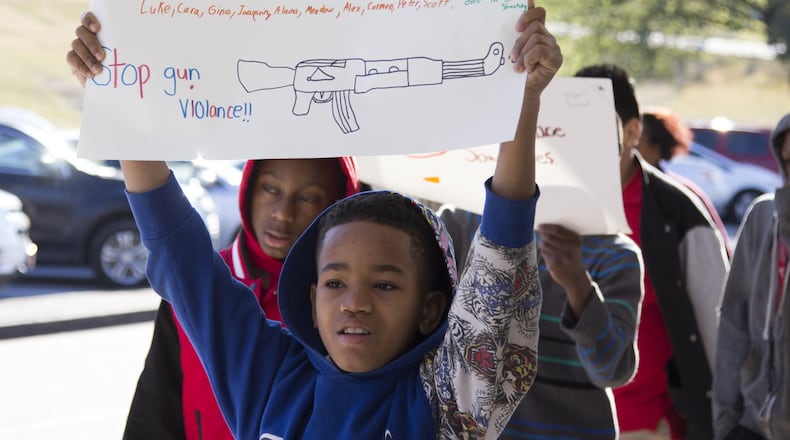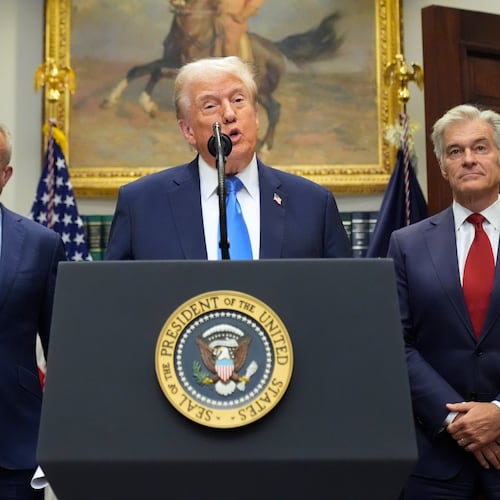As we begin to wind down summer, weary but hopeful that the worst of COVID is behind us, Atlantans are now grappling with another public health crisis — an acute, and worsening, gun violence epidemic.
According to the Atlanta Police Department’s crime data, as of July 3, there were more than 400 shooting incidents across the city, and homicides were up 36% over the 2020 rate. As these numbers have risen to unprecedented levels, elected officials, aspiring candidates, the business community, faith leaders, neighborhood activists and others have pointed fingers, assigned blame and debated solutions.
Regrettably, most commonly proposed solutions treat gun violence as a public safety problem, rather than a complex public health issue rooted in pervasive inequalities such as poverty, health care access, and inadequate educational and economic opportunities. For decades, Atlanta has relied primarily on law enforcement approaches to “solve” gun violence. Yet, the city’s continued high rates of gun violence indicate that strictly law and order approaches fall short. Without solutions that address the root causes of violence, the devastation continues.
Credit: contributed
Credit: contributed
Take the case of an Atlanta man in his mid-30s who was caught in the crossfire of a shootout while attending a Super Bowl party in 2019. He arrived at the Grady Memorial Hospital trauma center with a single gunshot wound. The bullet had entered on his side and exited through his chest, causing extensive organ damage requiring six surgeries and more than four weeks in the ICU.
His recovery was complex and prolonged, and even as his body healed, he grew despondent and withdrawn, demonstrating many of the risk factors for post-traumatic stress. As is the case with many shooting victims, recovery would take years.
Regrettably, his case is not unique. In Atlanta and many other cities nationwide, the gun violence crisis has taken a devastating toll on communities of color — where homicide is the leading cause of death for Black boys and men and the second-leading cause for young Latino men. According to the AJC, 80 percent of Atlanta’s homicide victims in 2020 were Black men.
Credit: contributed
Credit: contributed
Each year, more than 115,000 people are shot in America, and more than 43,000 lives are lost. That’s more than the number of Americans who die from malnutrition, HIV, Parkinson’s disease, viral hepatitis and many other conditions combined. Even as a recent Government Accountability Office study conservatively estimated the treatment costs for gun violence injuries at $1 billion annually, the level of public investment in preventing firearms-related injuries lags far behind most other public health priorities.
From symptoms to solutions
The good news is that effective solutions exist. Over the past 20 years, while much of the country has turned a blind eye to the gun violence crisis, communities of color and a growing network of public health allies have devised a slate of innovative, evidence-informed strategies that approach violence as a disruption of the public health ecosystem.
Research indicates that the most-effective violence reduction strategies treat violence like any other health epidemic. They identify the individuals at greatest risk of violence, leverage credible messengers who can coordinate wraparound services and mitigate its spread, and monitor healing and growth through long-term connection and engagement. When effectively implemented, these strategies have the power to end the scourge of cyclical gun violence on a broad scale — but to realize their full potential, we must invest in them.
One important intervention in the public health ecosystem is hospital-based violence intervention programs, or HVIPs. The interventions are grounded in research showing that victims of gun violence are at elevated risk for reinjury and highly susceptible to engaging in retaliatory violence.
At the heart of these programs are specially trained violence prevention professionals, who intervene with injured patients while they are in the hospital to discourage retribution, attend to the psychological trauma, and provide intensive case management services. They focus on the unique needs of each patient and link them to services that address their specific risk factors, such as treatment for substance misuse, housing assistance, or education and job opportunities.
These programs are desperately needed, as an estimated 41 percent of patients treated for violent injury are reinjured within five years.
Grady’s experience and role
Given the number of patients Grady treats for gun violence each year (more than 1,000 gunshot victims and 171 deaths in 2020 alone), it may be surprising that the hospital does not have a HVIP. But this is beginning to change as Grady staff reimagine how – and when – they deliver holistic trauma care.
In preparation of becoming a designated HVIP center, Grady’s trauma recovery center has established strong connections to other local violence disruption programs like Cure Violence, as it works to help high-risk individuals navigate the complex web of available medical and social services.
Grady also provides victims with long-term mental health resources, including art therapy programs designed to leverage the creative talents of victims as an avenue to guard against further violence and reinjury.
Currently more than 40 hospital-based violence intervention programs are members of the Health Alliance for Violence Intervention (HAVI), a national network that builds and connects HVIPs and promotes equity for victims of violence globally. These programs are a vital part of the solution to Atlanta’s gun violence crisis, and hospitals like Grady deserve to be among them.
Joining the HAVI network would provide more oversight for Grady’s clinicians, more case management for recovering gunshot victims, more technical assistance and research support and greater continuity of care for the patients who need it most. But it can’t happen without more federal, state and local support.
Two and a half years after being shot on Super Bowl Sunday, the victim we discussed above is on the path to recovery. As his physical wounds continue to heal, so, too, are his emotional scars. Not only is he working with Grady’s medical faculty to co-author research on trauma care, he is also training to become a credible messenger with the skills and know-how to assist future victims of gun violence.
Atlanta needs more stories like his. If we are ever going to overcome our gun violence epidemic, we need to fully embrace — and fully fund — public health strategies that have been proven to work. Grady deserves a dedicated and fully funded hospital-based violence intervention program.
The return on investment is clear. It’s time to make it happen.
Dr. Randi Smith is a trauma surgeon and surgical critical care doctor at Grady Memorial Hospital and Emory University. Fatimah Loren Dreier is executive director of the Health Alliance for Violence Intervention, a national organization.
About the Author
Keep Reading
The Latest
Featured



